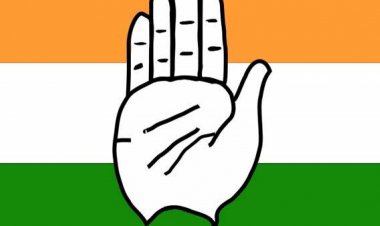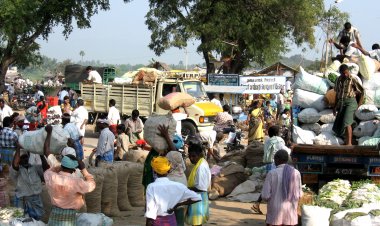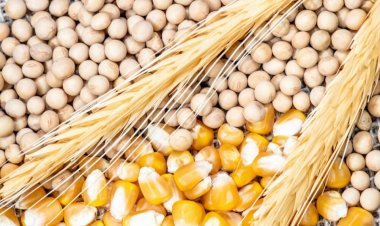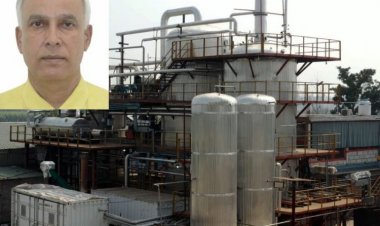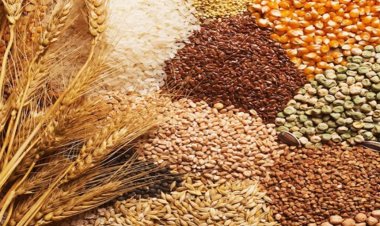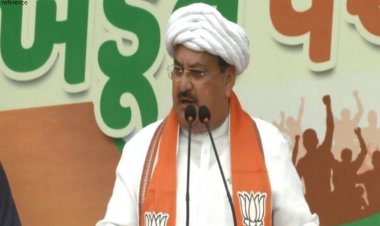Russia–Ukraine war an opportunity for self-reliance in edible oils, provided govt guarantees MSP
In 2021-22, the edible oil imports of India are expected to remain at about 130 lt and the import value may exceed Rs 1,30,000 crore due to the high global prices. Edible oil imports worth $14.02bn have been made during Apr-Dec 2021 and are estimated to reach about $18bn during the entire financial year.

History bears witness to the fact that the corporate world has benefited whenever there has been a war between nations. But if, amidst the circumstances created by the Russia–Ukraine war, the government makes a road map for a better crop price guarantee to the oilseed farmers of the country and implements it, this can not only take the country closer to self-reliance in oils but also become a means of an extra income of more than Rs 1 lakh crore per annum for the farmers of the country.
In the current year (2021-22), the edible oil imports of India are expected to remain at about 130 lakh tonnes (lt) and the import value may exceed Rs 1,30,000 crore due to the high global prices. Edible oil imports worth $14.02bn have been made during April–December 2021 and are estimated to reach about $18bn during the entire financial year.
Amidst the rising edible oil prices, the CIF import price of RBD palmolein reached $1,770 per tonne in India on Monday. The price of crude palm oil (CPO) reached $1,810 per tonne and that of crude soyabean oil $1,777 per tonne. The prices may increase further if the war between Russia and Ukraine continues. When the costs for processing, packaging and transportation as well as the dealer and retailer margins are added, these edible oil prices reach Rs 170-175 per litre. Interestingly, these are among the cheapest edible oils. In January, the price of RBD palmolein was $1,490 per tonne, that of CPO $1,510 per tonne and crude soyabean oil $1,506 per tonne. The price of crude sunflower oil was $1,475 per tonne.
The annual consumption of edible oils is 220-230 lt in India. According to the Solvent Extractors’ Association (SEA) of India, the total availability of edible oils in the country had been 93.18 lt in 2020-21 and 85.38 lt in 2019-20. This may increase to some extent in the current year as a better production of oilseeds, especially mustard, is expected. The annual imports stand at about 130 lt. This may well give an idea of the huge possibility of increase in edible oil production in the country.
The government may turn this crisis of war into an opportunity for the farmers of the country by making the necessary decision in the direction of attaining self-reliance in edible oils. It should prepare a purchase guarantee scheme at minimum support price (MSP) for the farmers producing mustard, soyabean, groundnut and sunflower and implement it. This may be started with groundnut and soyabean in the coming Kharif season.
However, the new crop of mustard has started coming to the market and the prices are running at Rs 6,600 per quintal, which is substantially higher than the MSP of Rs 5,050 per quintal fixed for the current season. But the government will have to ensure that the prices do not go below the MSP. In the current Rabi season, farmers have increased the area under mustard on a large scale in the hope of better prices.
But mere farmers’ hope won’t do. The government will have to make a concrete strategy. It needs to set a target of increase in oilseeds production for at least five years. It should, therefore, try to increase the groundnut and soyabean acreage for the next Kharif season, and for this, a clear message should be sent to the farmers that MSP will be ensured for their crops. Besides, if necessary, a scheme for providing bonuses may also be implemented. Such a strategy has had a positive impact on the production of pulses in recent years.
Farmers have increased the mustard acreage this year in the hope of better prices. When this writer recently visited Sambhal, Chandauli and the Terai districts for the coverage of the Uttar Pradesh (UP) Assembly elections, he got to see an unprecedented increase in mustard acreage. Farmers in the districts of Bahraich, Gonda and Basti in eastern UP have distributed their acreage better among sugarcane, wheat and mustard. If this hope of the farmers is encouraged, the results can be better. The acreage for Punjab and Haryana should be fixed next year and a strategy made to increase production there.
On average, India imports 130 lt of edible oils every year. Of this, the share of palm oil is 70 lt. Next comes soyabean oil at about 35 lt followed by sunflower oil at about 25 lt. In order to reduce the imports, the government should work on the strategy of increasing the current mustard oil production of 25 lt to 50 lt. A better MSP for mustard and its purchase guarantee may prove efficient in this. In order to increase the productivity of mustard, it is also necessary to make its new species accessible to the farmers. Deepak Paintal, a former Vice-Chancellor of the University of Delhi, has claimed to develop a better-yielding variety, but it is stuck due to the issue of GM and non-GM.
The soyabean oil production may be increased from the current 13 lt to 20 lt by encouraging the soyabean farmers. Similarly, the production of groundnut oil may also be increased by 25 lt by increasing the production of groundnuts. Domestic palm oil production also needs to be increased from the current 3 lt to 25 lt. If the production of rice bran and cottonseed is increased to 5 lt, it is possible to increase the domestic production of indigenous oils by 80 lt. If we add this possible production to the current 85-90 lt, the availability of edible oils from domestic production may reach up to 160 lt.
The annual consumption is about 230 lt at present, which may exceed 250 lt in five years. Given this scenario, if the government starts focusing on oilseeds production from now onwards, the dependence on imports will reduce to one-third. It does not appear that import dependence can be completely eliminated, but if the government works with a better plan, it will benefit both farmers and consumers. Therefore, the formula of state-wise crop planning and MSP guarantee to the farmers can work.



 Join the RuralVoice whatsapp group
Join the RuralVoice whatsapp group






























